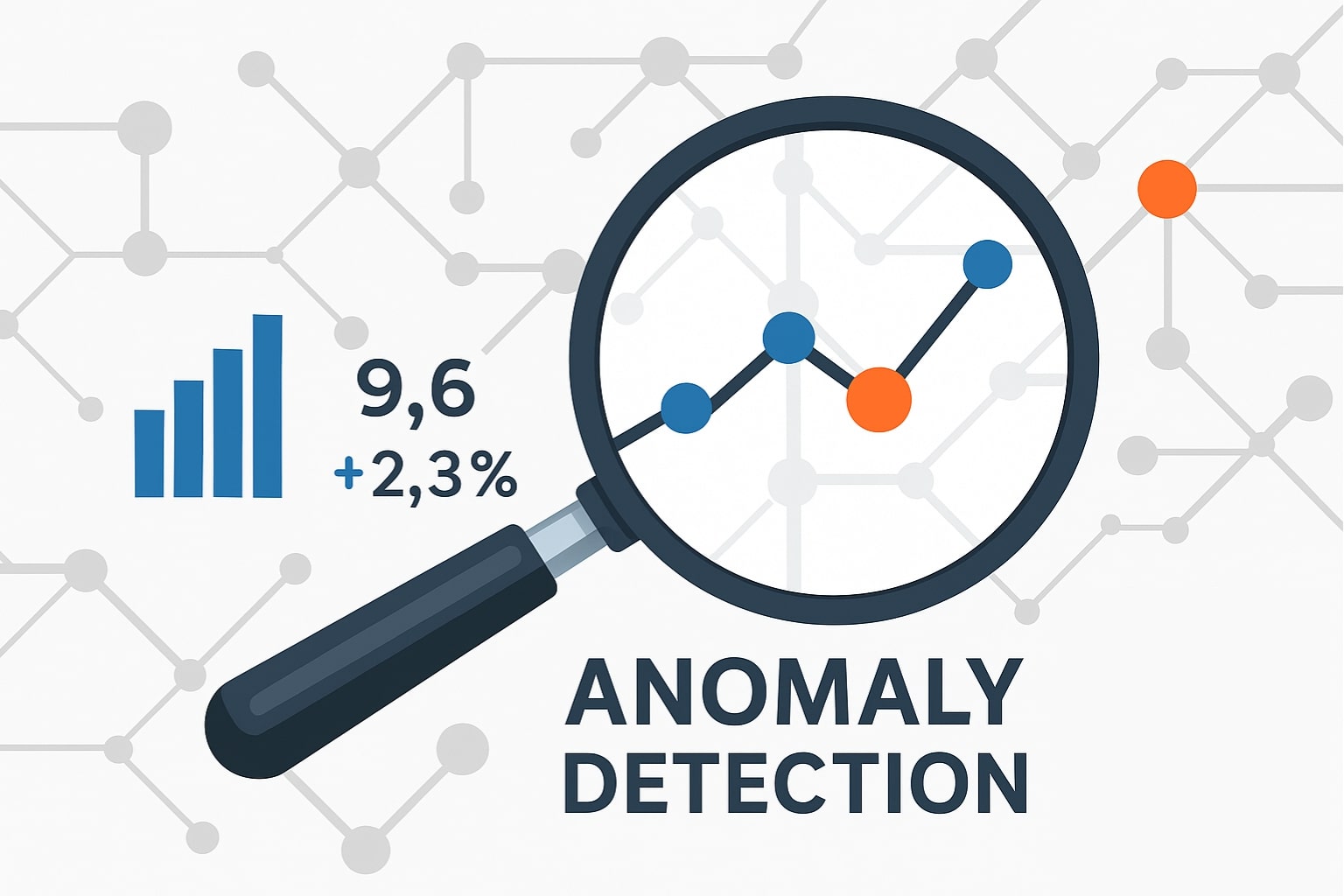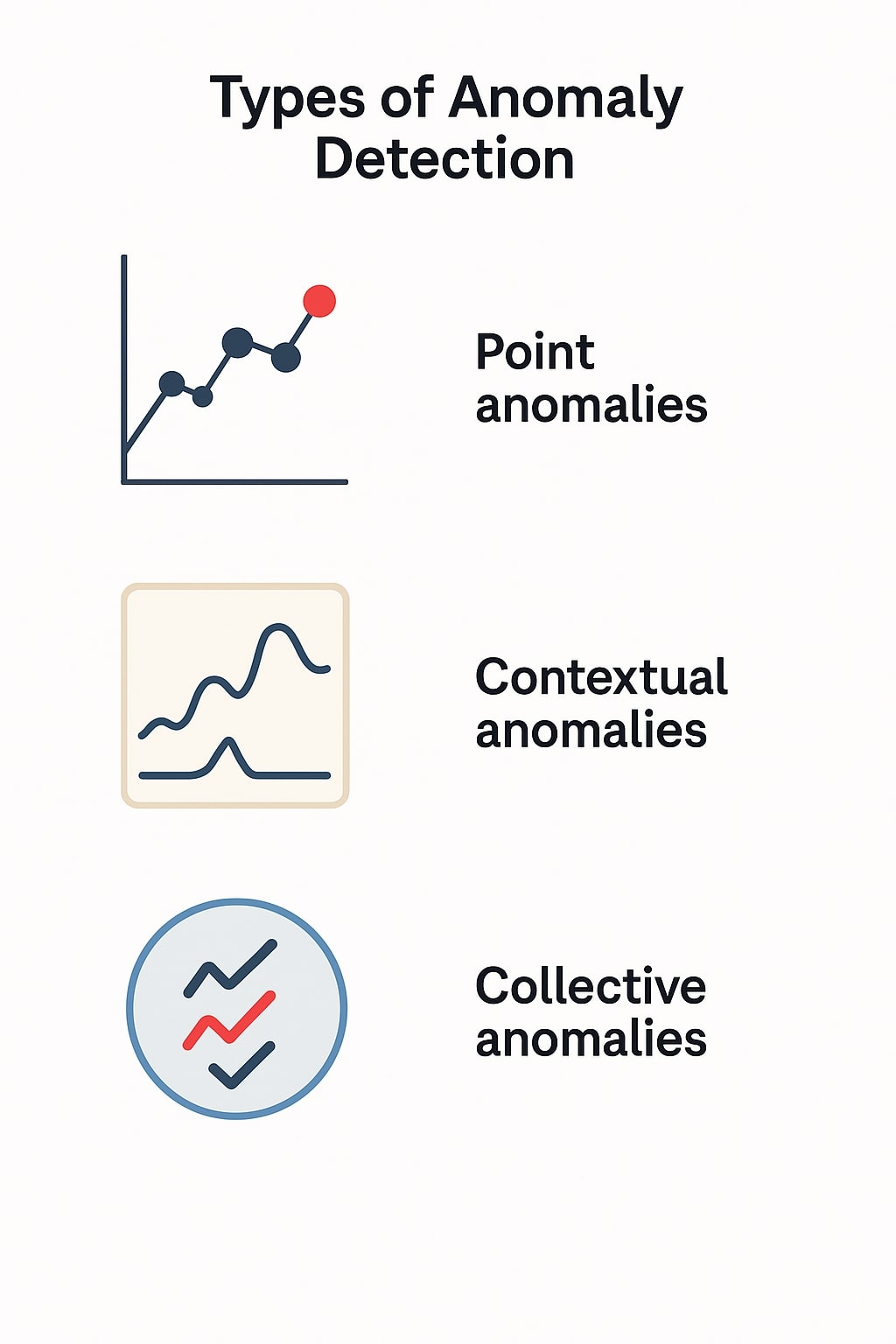What is Anomaly Detection?

Team Thinkstack
May 08, 2025
Table of Contents

Anomaly detection is about identifying unusual patterns or behaviors that don’t align with the standard trends in a dataset. These can indicate anything from system failures to fraud to new business opportunities.
What counts as an anomaly depends on the context, as what seems unusual in one environment might be normal in another.
Anomaly detection used to be done manually, but with the growing scale and complexity of data, artificial intelligence (AI) and machine learning (ML) are now used to detect outliers and unusual patterns in real time.
It plays a critical role across industries.
- Risk management: Helps detect fraud, system breaches, or operational failures early before they escalate.
- Operational stability: Catches hidden issues that could disrupt business processes or customer trust.
- Better data quality: Flags errors and inconsistencies that could skew analysis and lead to wrong decisions.
- Opportunity discovery: Find unexpected patterns that could point to new products, markets, or efficiencies.
- Real-time response: Enables faster action by monitoring live data streams and alerting at the first sign of trouble.
Core Concepts of Anomaly Detection
A few fundamental principles guide anomaly detection:
- Outliers vs anomalies
Anomalies are unusual data points that differ from the regular structure or behavior seen in the data. Outliers are a specific type of anomaly, they are data points that are statistically far from the rest. While often used interchangeably, outlier detection usually happens when the training data already contains anomalies, while novelty detection assumes the training data is clean. - Normal vs abnormal patterns
Anomaly detection works by learning what "normal" looks like and spotting anything that doesn't match. Normal patterns are the majority, and anomalies are rare exceptions that look different, whether in values, relationships, or trends. - Importance of context in detection
What looks strange in one situation might be normal in another, context changes everything. Precise anomaly detection needs a deep understanding of the environment (like time, location, season) to set accurate baselines and avoid wrong alerts.
Types of Anomaly Detection

Broadly, anomalies fall into three categories, and it is necessary to understand them to choose the right detection method for accurate results.
- Point anomalies involves a lone data entry that appears significantly different from the surrounding data. It stands out by itself, without needing any additional context. Detection is straightforward using stats or distance methods. Common in fraud, sensors, and quality checks.
- Contextual anomalies are values that seem normal in one context but raise red flags in a different setting. They only seem anomalous when you consider extra context like time, location, or conditions. Detection needs models that factor in context. These are frequently seen in scenarios like time-based logs, user behavior patterns, or region-specific fraud detection.
- Collective anomalies occur when a set of data points appears usual on their own but form an unexpected pattern when analyzed as a group. The anomaly comes from the pattern or sequence they form, not from any single point. Detection needs models that track sequences. Common in network attacks, system failures, and machine faults.
Anomaly Detection Techniques
Different techniques are used to detect anomalies based on the type of data, the availability of labels, and the complexity of the problem.
1. Statistical methods assume that normal data follows a known pattern or distribution. Anything that deviates far enough from this pattern gets flagged as an anomaly. Good for small, clean datasets, but not reliable when patterns get complex or messy.
- Z-Score: Flags points that are too far from the average compared to most others.
- Interquartile range (IQR): Detects data points that lie far beyond the central portion of the dataset, typically beyond the upper or lower quartiles.
- Grubbs’ test: Identifies a single data point that stands out under the assumption that the rest of the dataset follows a normal distribution.
- Boxplots and HBOS: Use simple graphs or histograms to highlight points that are rare or stand out.
2. Machine Learning Methods use data to find patterns and spot outliers, with or without labels.
- a. Unsupervised learning: Trains on unlabeled data to find points that don’t fit. Best when labeled anomalies are rare.
- Isolation forest: Isolates anomalies faster with random splits.
- Local outlier factor (LOF): Flags points with much lower density than neighbors.
- K-Means, DBSCAN: Detect outliers by identifying data points that fall outside established groupings.
- ABOD: Detects outliers in high-dimensional spaces using angles.
- b. Semi-supervised learning: Learns from labeled normal data, flags anything different.
- One-class SVM: Draws a boundary around normal points.
- Autoencoders: Learn to recreate normal inputs, and a high reconstruction error often signals an anomaly.
- c. Supervised learning: Trains with labeled normal and anomalous examples.
- SVMs, random forests, KNN, neural networks: Separate normal from abnormal with direct labels.
- Variational autoencoders (VAE): Use probabilities in hidden layers to spot when things look odd.
- LSTM Networks: Find unusual patterns in time-based data like logs or sensor readings.
- Transformer models: Catch long-range or complicated patterns in sequences.
- Foundation models: Adapt large pre-trained models to detect anomalies in images or text.
- Bayesian networks: Used to detect events that fall outside the range of expected probabilistic behavior.
- Hidden markov models (HMMs): Catch strange shifts in sequences or state transitions.
- Ensemble techniques: Mix models by voting, stacking, or blending for better coverage.
Conclusion
Data drives everything today, from the smallest decisions to the biggest impacts, especially with AI becoming a core part of how systems operate. Anomaly detection sits at the centre of this data ecosystem. It is critical for making sense of fast, complex, and constantly growing data.
It’s used across industries like finance, healthcare, and cybersecurity to catch problems early, prevent fraud, secure systems, and find hidden opportunities.
Choosing the right methods, understanding their limits, and combining human expertise with machine learning is key to making anomaly detection work where it matters most.
At the same time, its limitations must be kept in check: what counts as an “anomaly” often depends heavily on context, and models can struggle with noisy data, shifting patterns, and the scarcity of labelled examples.
Anomaly detection is about driving better, faster, and smarter decisions across every domain.